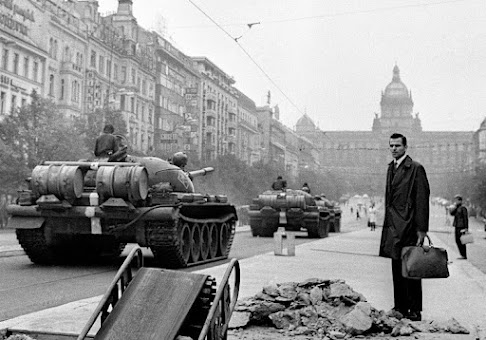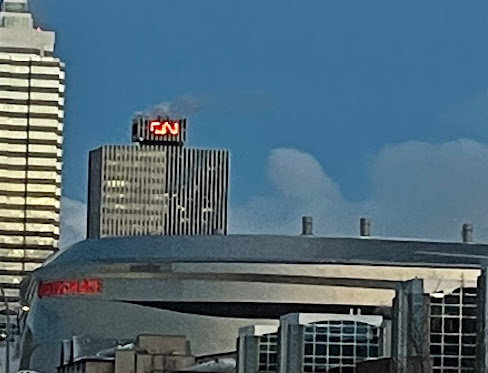Three Things from Edmonton podcast -- Episode 98: hope and feathers, soccer balls, building lights
Happy end of the week, y’all! Here are three things that made for a little, okay, more than a little, happiness and gratitude.
1. Hope and feathers
Stockboys at IGA glanced over at him as he stood there near the eggs, feathers still fluttering free from the gash in the right sleeve of his winter jacket. A little girl pushing one of those little shopping carts pointed at him and was gently hushed by her mother who would likely explain later in the car that it’s not polite to stare at strangers. The object of this attention was my friend Darren, the intensive care physician. He had set out for the grocery store on his bike and had taken a wooded, downhill route, misjudged his position or his speed or his age and smashed into a bristling spruce tree. Like an opponent’s spear levelled in a joust, the branch knocked Darren off his mount, slashing his puffy armour and lacerating the skin beneath. It was the curious sight of this knight-errant, one jacket arm sliced open, feathers still pasted to his beard, that greeted fellow shoppers near the dairy cooler. Why am I laughing as I keystroke this? What kind of monster am I??!
What if hope is instead the spilling out of those same feathers?/
Perhaps it is the open gash across your sleeve that let them loose…/
Perhaps it is the open gash across your sleeve that let them loose…/
Let loose into a cold, bleak day in Edmonton, the kind of winter day where the blowing snow made everything uncertain, or, as Mary put it:
[T]his cold windy day that held absence of everything.
The bird of hope in the famous Dickinson ballad stays in the heart of the traveller, even though not a crumb of sustenance is offered to it. The puffy-jacket feathers in Mary’s verse stay on the branch tip despite the wind and the cold.
The whole thing—the unexpected encounter with the armless hero, the commemoration in verse—was a remarkable episode that combined some of my favourite things: Andy’s IGA, bike riding in winter, spruce trees in winter, dairy products, the poetry of it all, the surprise of it all, really. Unexpected joy in weather, feather and verse stitched together still happens out there. What a lark!
Next to the approximately nothing I know about curling, I know even less about soccer. I have nothing meaningful to add about the goal scored by Alphonso Davies, the first ever for the men’s national team at the World Cup. Soccer will be an acquired taste, and lexicon. A clean sheet is what’s ready for baking. The pitch is an idea you want to sell. I am coming around, though. I no longer apply the hockey fan’s imagination to the tactics near the opposition goalie—keeper, right, right. In hockey, it makes sense to get pucks and bodies to the net and to hope for a lucky bounce. Doing so in soccer would be a waste of the energy and teamwork it took to get the ball under control deep in the opponent’s territory in the first place. But, still, to the analysis of the Canadian side’s strategy at this World Cup, to the dissections of this penalty kick or that [bleep] Croatia comment, I have zero, or nil, to add. Other than the obvious, which is that the sport being talked about is not hockey and the opponents being talked about are not the usual hockey foes. Canada is now playing Belgium and Croatia and Morocco. Mexico is in this tournament and Spain and England and Cameroon and Brazil and The Netherlands. It’s a different world that the team makes us a part of. That fact alone is worth not skating over.
Okay, on the goal, the Canadian goalkeeper Borjan (who, like Billy Bragg’s uncle in the song once did, plays for Red Star Belgrade) put the ball 50 metres through the air into the midfield where it found the first-touch right toe of Cyle Larin even before it hit the ground. Deftly, the ball went up the right side to Tejon Buchanan, and then, over the Belgian line and off the head of the leaping Davies, it crossed into history.
3. Building lights
In 1968, the Soviet Union invaded Czechoslovakia, ending the Prague Spring reforms. Many of the country’s brightest were on the move. One of those fleeing families found their way into an apartment in downtown Edmonton. From his bedroom in that apartment a young boy in that family would look out his window and up at the CN logo atop Edmonton’s CN Tower next door. He watched how the neon C flowed into the N in a curved path that evoked a train route line: around bends, up hills, down hills, along the bottoms. How the red logo went to black. And then how it returned and retraced its journey from the start of the C to the tip of the N.
Lucky me, I would end up going to high school with that young boy. He would become an internationally known and shown sculptor, mostly in metal, but also in light. He would go on to design Edmonton’s most beloved light display, the giant red, gold and green LED Christmas trees on the south face of the Telus Building downtown.
You don’t get a good view of those lights standing on the bridge over the MacKenzie Ravine way out west on 142 Street, but it was there I stopped my bike last week to watch the bit I could see of them, how they flash on and off, and to recall the artist himself once telling me that the inspiration for the pattern came from the CN logo years before.
Indeed, the CN logo and the Christmas tree lights don’t stay lit. They don’t stare at you. The don't blink madly, either. They flow on and off. They leave and they return. There is a rhythm of dark and light, speech and silence, note and rest to each.
Thanks for the music, Slavo.













3 good things, I cheered watching the 🇨🇦 soccer game with Croatia, I felt empathy with DR. D's misfortune and I remember the CN light very well and I always enjoy the Telus (AGT) Tower trees, where I once worked.
ReplyDeleteHello! Thanks for the good word on the three things, and it's great to know we have connections to the same game, knights and buildings! Have a good day. :)
Delete